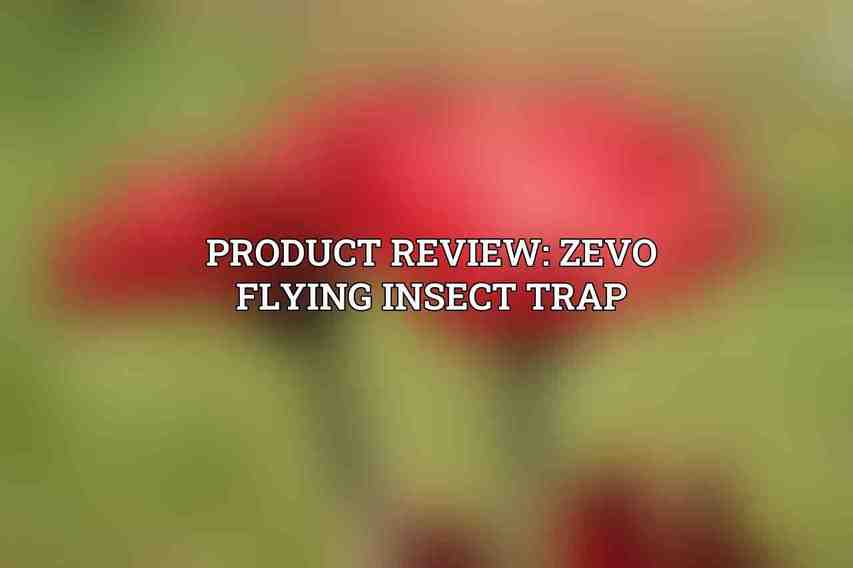Catchmaster offers a diverse range of traps and monitors to effectively combat insect infestations. These products play a crucial role in pest control by targeting specific insects and helping in monitoring their populations. The different types of traps and monitors available cater to various needs and preferences of users.
Learn more about Best Indoor Insect Traps of 2024
Types of Traps and Monitors Available
- Pheromone Traps: These traps utilize pheromones to attract insects, primarily targeting specific species.
- Sticky Traps: Known for their adhesive surfaces that trap insects upon contact.
- Light Traps: Utilize light sources to attract and trap flying insects like flies and moths.
- Electronic Traps: Utilize electric grids to zap and eliminate insects like mosquitoes.
Applications of Catchmaster Products
Catchmaster products have versatile applications that go beyond mere trapping of insects. They are instrumental in monitoring insect populations, aiding in the identification and targeting of specific pests, reducing the spread of insect-borne diseases, and safeguarding stored products from contamination.
Choosing the Right Trap or Monitor
Selecting the appropriate trap or monitor is crucial for effective pest control. Several factors need to be considered before making a decision to ensure the desired outcome. Understanding the target pests, the location of infestation, preferred trap type, and budget constraints are essential for choosing the right Catchmaster product.
Factors to Consider
- Target Pests: Different traps cater to specific pests, so identifying the target insect is vital.
- Location of Infestation: The environment where the trap will be placed dictates its effectiveness.
- Trap or Monitor Type: Choosing between pheromone traps, sticky traps, light traps, or electronic traps depends on the situation.
- Budget: Consider the cost of the trap versus its efficacy in eliminating pests.
Specific Applications
- Pheromone Traps for Moths: Ideal for monitoring and controlling moth populations in enclosed spaces.
- Sticky Traps for Cockroaches: Effective in capturing roaches and monitoring their activity in kitchens and bathrooms.
- Light Traps for Flies: Perfect for attracting and trapping flies in outdoor spaces like patios or gardens.
- Electronic Traps for Mosquitoes: Utilize electric grids to eliminate mosquitoes and are suitable for outdoor areas with high mosquito activity.
Using Catchmaster Insect Traps and Monitors
Proper use of Catchmaster traps and monitors is essential for maximizing their effectiveness in controlling insect populations. By following step-by-step instructions and best practices, users can achieve significant results in pest management.
Step-by-Step Instructions for Specific Traps
- Pheromone Traps:
- Place bait in the trap.
- Hang or place trap near suspected areas of infestation.
- Sticky Traps:
- Remove backing and place trap where pests are likely to cross.
- Replace trap when full.
- Light Traps:
- Plug in trap and place in areas with high insect activity.
- Clean and replace bulbs regularly.
- Electronic Traps:
- Follow specific user guide for the particular model.
- Clean and empty trap as needed.
Best Practices
- Use multiple traps for larger infestations to effectively capture more insects.
- Place traps strategically in areas where insects are most likely to encounter them.
- Monitor traps regularly to assess their efficacy and replace them when necessary.
Product Review: Zevo Flying Insect Trap

Features and Specifications
- Plug-in power source: Conveniently powered through standard outlets.
- Dual-action technology: Combines UV light and odor attractant to lure flying insects.
- Washable and reusable collection tray: Allows for easy maintenance and continuous use.
- Includes two plug-in bases and two refill cartridges: Ensuring long-lasting protection against flying pests.
How to Use
- Plug in the trap in an area with high insect activity to attract and capture flying insects.
- Replace cartridges every 30 days or as needed for optimal trap performance.
- Clean the collection tray regularly to maintain hygiene and trap efficiency.
Pros and Cons
- Pros:
- Effective against a wide range of flying insects.
- No harsh chemicals or pesticides, making it safe for indoor use.
- Easy to use and maintain, requiring minimal effort.
- Cons:
- May not be suitable for all outdoor environments due to specific lighting requirements.
- Requires regular cartridge replacements, incurring additional costs over time.
Catchmaster Insect Traps and Monitors offer an effective solution for controlling insect populations and safeguarding living spaces from pest intrusions. By choosing the right trap, following proper usage guidelines, and incorporating best practices, users can enjoy a pest-free environment with improved air quality and reduced insect-borne disease risks.
Frequently Asked Questions
What is a Catchmaster Insect Trap and Monitor?
A Catchmaster Insect Trap and Monitor is a versatile tool that helps in monitoring and trapping various types of insects in indoor spaces.
Learn more about Zevo Flying Insect Trap: A Comprehensive Overview
How does the Catchmaster Insect Trap and Monitor work?
The trap contains a sticky surface that attracts insects. Once the insects land on the surface, they get stuck and cannot escape, allowing for easy monitoring and control of insect populations.
Read more on Best DIY Insect Traps: Easy and Effective Solutions
Where can I use the Catchmaster Insect Trap and Monitor?
The Catchmaster Insect Trap and Monitor can be used in homes, offices, restaurants, warehouses, and any other indoor space where insects are a problem.
Is the Catchmaster Insect Trap and Monitor safe to use around pets and children?
Yes, the trap is non-toxic and safe to use around pets and children. However, it is always recommended to place the trap in out-of-reach areas to avoid accidental contact.
How often should I replace the Catchmaster Insect Trap and Monitor?
It is recommended to replace the trap and monitor every 30-60 days or when the sticky surface becomes full of insects or dust.
Read more on Dynatrap Indoor Insect Trap: Comprehensive Guide
Check this blog on Zevo Insect Trap at Target: Pricing and Reviews

